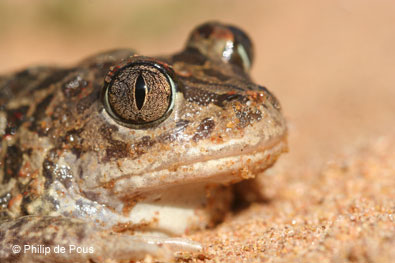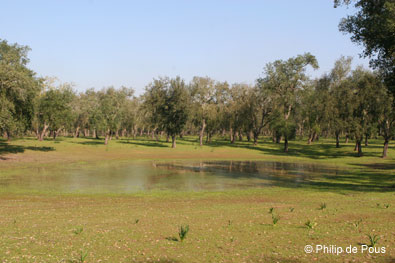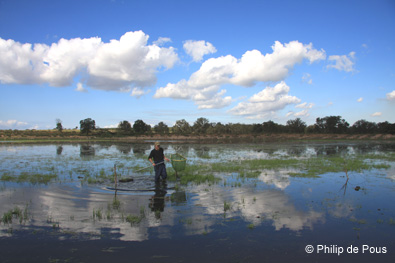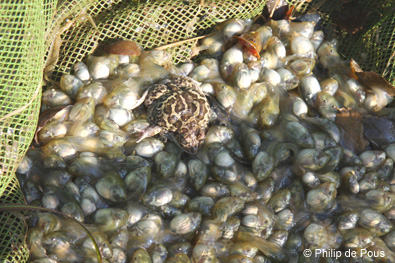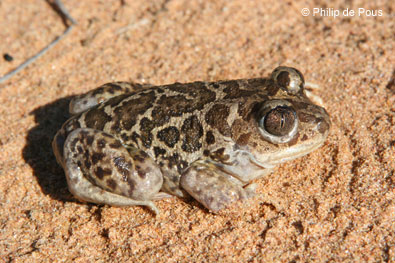We have just received this blog from EDGE Community member Philip de Pous, with an updated on his current work in Morocco:
After ten weeks of research in Morocco, we decided to write a blog for our current project: “Ecology and conservational status of Pelobates varaldii from the coastal areas of Morocco”. The aim of this study is to research the ecology, phylogenetics and conservational status (distribution and threats) of the Moroccan spadefoot toad (Pelobates varaldii). Pelobates varaldii is currently ranked number 36 in the Evolutionary Distinct and Globally Endangered (EDGE) top 100 list.
Our research team consists of three members: Philip de Pous, Diederik Dingemans and Eric van der Pol. We are all undergraduate students with a very keen interest in amphibian conservation. We study wildlife management at the University of Applied Sciences Van Hall Larenstein in the Netherlands.
Our research is focused on the breeding sites of Pelobates varaldii. We randomly chose 50 temporary ponds within Mamora forest. Approximately 25 different parameters are noted at each temporary pond that has been included in our research. Collected data concerns pond morphology, chemical composition of water, habitat and the catch per unit effort of several different amphibian species and predators present at every temporary pond. In addition to the above we collect samples to determine the possible presence of the chytrid fungus Batrachochytrium dendrobatidis in this area of Morocco.
We arrived in Morocco approximately ten weeks ago. During the first days of work we discovered Mamora forest to be a very accessible and research friendly forest. At least that was what we thought before it started raining again. The forest is heavily grazed by sheep, cows and goats which threaten the natural undergrowth. Almost every cork oak has been stripped of its cork and many parts of the forest are used for the harvesting of wood. Large parts of the forest have also been replanted with eucalyptus, acacia and pine species which are subsequently harvested when sufficiently matured, leaving many open gaps in the forest structure.
During the first weeks in the field we discovered to our great excitement that Pelobates varaldii is still very abundant within the constraints of Mamora forest. Tadpoles were present in almost every temporary pond we have visited during the course of our research. Until now we have measured and photographed approximately 150 adult individuals, which provided us with valuable data concerning their population demography and morphological characteristics, of which now only very scarce data is available.
We have just returned from our first expedition to the easternmost limits of the species distributional range and had little luck in finding Pelobates varaldii there. We visited several locations where the species was known to occur at some point in time, but unfortunately we were not capable of confirming their presence in these regions. On the bright side we did however confirm that the species is present in a royal hunting reserve north of Merja Zerga, which we have concluded to be better protected than any normal protected area we have seen thus far.
As you may have heard in the news it has been raining in Morocco for quite a while. The rains of the last weeks caused flooding in many areas of Morocco. In result many parts of the forest where also inaccessible due to flooding, making our work much harder than anticipated. Luckily the rain has stopped now and we are hopeful that our work can continue soon.
Philip de Pous & Diederik Dingemans
